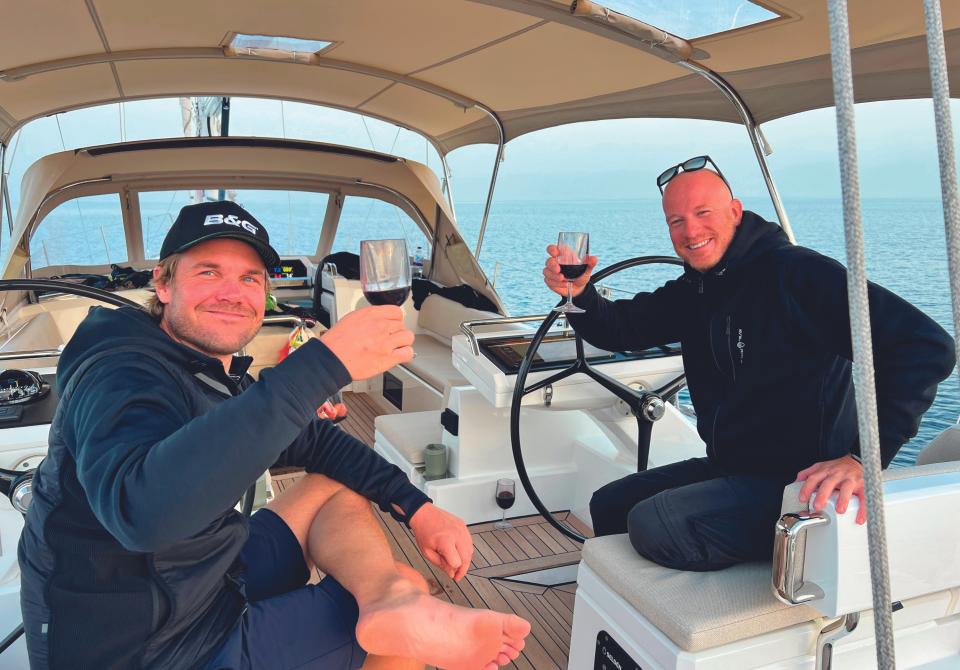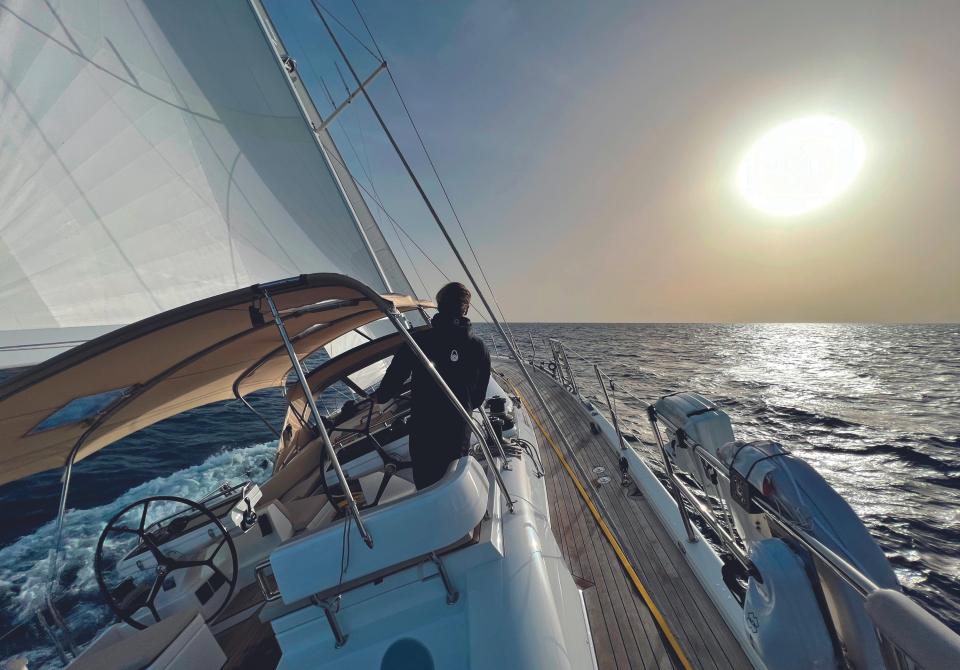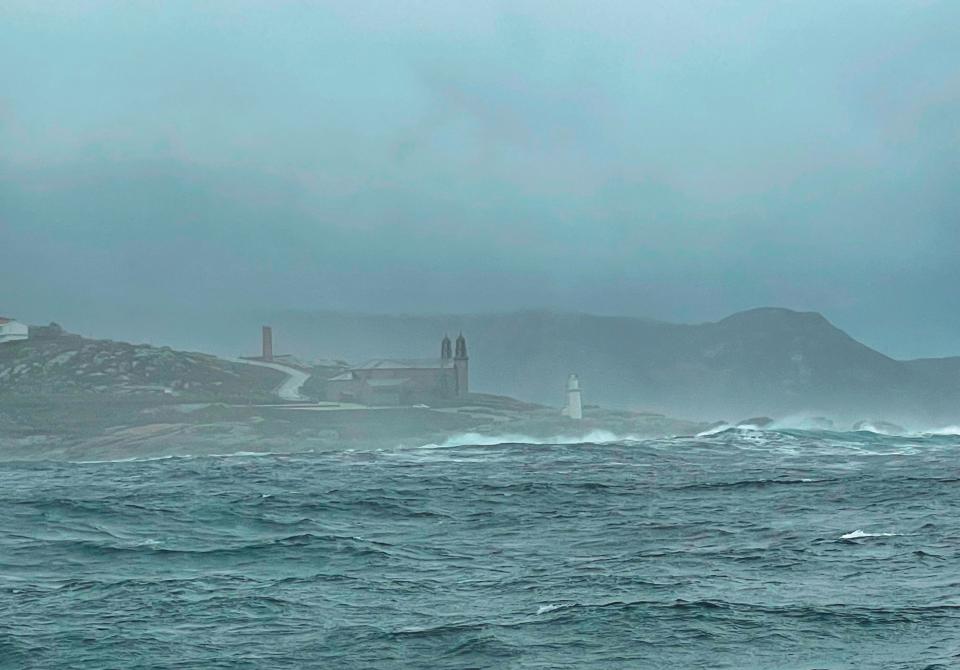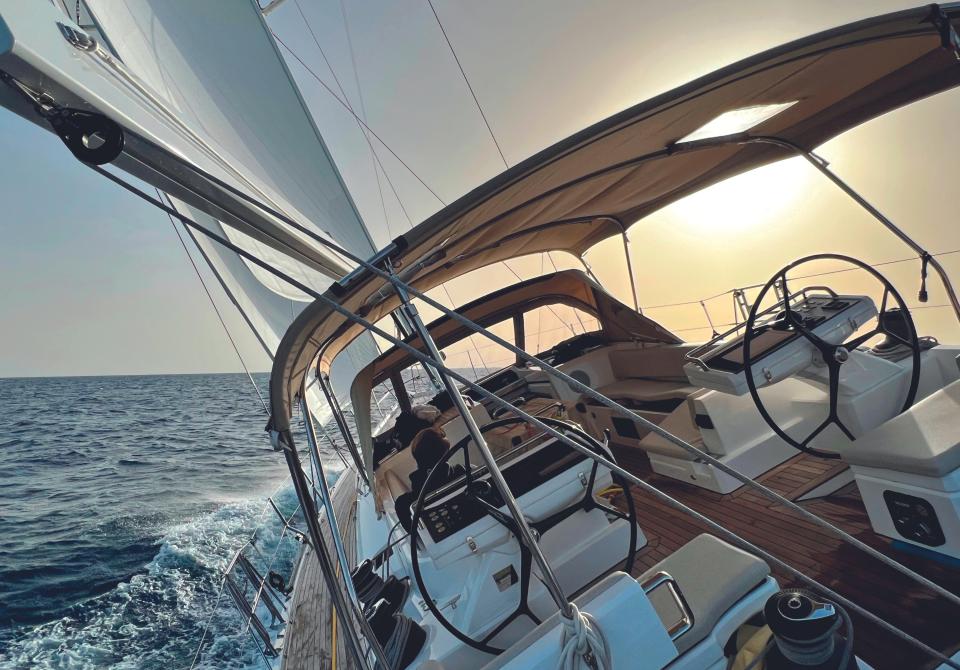Joakim Berne has worked closely with Sail Racing’s founders for 15 years – and they are all passionate about high-quality sail apparel and Oyster yachts.
From a young age, Berne could be found out on the water honing his sailing skills in the Optimist, European Dinghy and Laser classes. Graduating to larger yachts and high-activity sailing, it’s no surprise when he’s not sailing, he is working closely with the founders of Sail Racing in the industry he loves.
Sail Racing began when the founders identified that all the big names in sailing wear had a similar focus on offshore sailing. They saw a gap in the market for high-activity sailing and so Sail Racing was born in 1999 out of Sportsmanship, the Swedish sports distribution group.
While the focus was on producing quality clothing for high-activity sailing, the only way to succeed in this relatively small sector was to launch an effective marketing strategy.
DISCOVER THE HIGHLIGHTS FROM THE RECENT MAIDEN VOYAGE OF JUPITER, A BRAND-NEW OYSTER 595, SKIPPERED BY CEO OF SWEDISH SAIL CLOTHING BRAND SAIL RACING.
“Our efforts were aimed at high-profile sailing events,” Berne explains. “Timing is everything and as we launched, the sport developed in this direction. We partnered with events like the World Match Racing Tour, Volvo Ocean Race, and the Extreme Sailing Series, and consequently picked up the contract with America’s Cup with the Swedish Victory Challenge.
“This was a huge breakthrough which resulted in Sail Racing not only joining forces with Larry Ellison’s Oracle team, defending the America’s Cup in Bermuda in 2017, but also becoming the official clothing partner for the America’s Cup at the Bermuda finals.”
When Russell Coutts and Larry Ellison launched the SailGP circuit in 2018, Sail Racing was the obvious choice for official clothing partner. Berne continues: “With such a good relationship built over so many years, and the fact SailGP was the perfect concept for our high-activity style brand, we started working with the organisation and the first teams on the circuit and it just grew from there.”
It’s quite a leap from sail race clothing to bluewater cruising yachts but with the business well-established, there was now time to consider yachts. Berne remembers there was only one contender in the mind of Sail Racing’s co-founder: the Bentley of the seas: Oyster.
Introduced to the Oyster brand by friends and sailing fanatics through the business, Oyster was not only deemed the safest vessel on the market but also one so well-built and over-engineered that it would last a lifetime.
“He kept telling me that if you are looking for a bluewater cruiser there is only one name – and that’s Oyster,” laughs Berne. “And one day, I will buy one!.” The co-founder spent years reading sailing magazines and learning everything about Oyster. He often went to boat shows to look at them and eventually the time was right to invest.
The process of choosing and ordering the boat, was exciting but, as Berne explains there was a lot to think about and many decisions to be made: “We began with the 495 but we soon realised it was too small for the dream he had of taking his whole family out cruising.
“Also, for blue water cruising, it was restrictive when it came to the size of the fuel and water tanks. Another priority was the Oyster signature Seascape windows both at the stern and in the saloon. Attention then turned to the 565 but it was the 595, with its impressive volume, high spec and luxurious interior finishes that offered the complete package."
We partnered with events like the World Match Racing Tour, Volvo Ocean Race, and the Extreme Sailing Series...
Berne was very involved in the entire build process, which was a fantastic experience. There was a very clear focus on what was intended for the boat, which was a good starting point.
“It was specified to take the family around the Mediterranean in comfort and maybe in the future to the Caribbean. The idea was to create a real family cruising boat to be used for pleasure and work at corporate activities at racing events. The plan is to enjoy a good day on the water with our customers while watching the racing.”
As far as the specification went, Berne believes every box was ticked, along with some extra custom upgrades. “We did a few things, which I have to say, have made the boat even more modern. The co-founder is very interested in design and architecture and got involved in the details, as he did with Sail Racing.
“The boat, therefore, is very clean and functional and, in his design, the cockpit instruments are all integrated, so everything streams onto one big screen instead of having lots of small units.”
Berne was very complimentary about Oyster’s customer service. “Impressive” was the word he used. “The process from ordering to delivery was astonishing – super treatment all the way, with people helping you make the right decisions at every step. And when we saw the final product, we were immensely happy with how everything came together. In fact, we were blown away by the level of support, the project management and the handover – It was a very high level of service.
“We were most impressed with Debbie Scougall – our dedicated project manager – who is an experienced sailor herself which, for the co-founder as a new Oyster owner, made a huge difference. She was also with us for a week during the handover, which was amazing and hugely beneficial.”
A year and a half after commissioning, Jupiter was ready for handover. She had already made her public debut at the Southampton Boat Show a few weeks earlier. So she was ready for handover from Oyster’s Ipswich base when the owner and Berne, along with a team of friends, arrived in early October.
“We spent almost a week in Ipswich during the handover process, to prepare the boat and learn about all the systems,” he says. “This was before we set off to Malta on her maiden voyage, which is where she was to be registered. The day before we set sail, the rest of the five-strong team arrived and we did a complete inspection together. We provisioned her and then left for Guernsey (our first leg) on 10 October.
“We were a team of five friends with pretty extensive sailing experience from different areas. It was super exciting to get on the boat and finally be ready to leave. We were also very glad because we had Luke Hancock onboard – Oyster’s commissioning skipper – who joined us for the first leg to Guernsey. That made a huge difference because he knew the boat inside out. This gave us so much more confidence because during that short leg to Guernsey, he showed us how everything worked in a very relaxed manner.
“Also, Luke was particularly helpful with exporting the boat from the UK and dealing with all the paperwork. It felt good to sail her for the first 48 hours together with a guy that really, really knew Oyster. This boat is fully equipped with everything you can imagine so, learning how all the systems worked took a while – even knowing how to turn on the lights for example!”
Team Jupiter had a fabulous sail down the east coast and along the Channel, arriving in Guernsey the next evening. But plans for the following passage – across the Bay of Biscay – were disrupted. Joakim continues: “The idea was to stop for a few hours while Luke did all the export paperwork and then leave for Malta that night. But we arrived ten minutes too late for the Customs Office in Guernsey, so we had to stay overnight and that meant the weather window for the Bay of Biscay closed. The weather then took a big turn for the worse and we ended up staying for two nights.”
After two days in Guernsey and with the weather showing no signs of abating, it was decision time. It was far from ideal, particularly in a brand-new yacht, but they were on a tight schedule: “We couldn’t wait a week for another weather window, because we all had other commitments, so we said, ‘let’s go for it!’ We left in the dark at 0600 on 13 October and it was blowing a hoolie with 40kt headwinds in parts of the crossing and nasty waves. It may have been smarter to have waited but we thought it was a great opportunity to put ourselves, and our lovely new boat, to the ultimate test and see what she was capable of.”
Team dynamics aboard Jupiter could not have been better either and their Bay of Biscay voyage was a real bonding experience. “We had a lot of fun too. Not all of us had met each other before but we ended up a tight-knit group. I think one of the best decisions we made was to have a rolling roster watch system: four hours on, six hours off. It meant you started your watch for two hours with one friend, then you sailed the next two hours with another, so it was very sociable in that way.”
So how did she perform in 40kt headwinds and huge seas? Joakim says one of the first things you notice is how quiet she is down below. “Usually, in conditions like that, you would expect crashing noises; a lot of noise from the hull, and the sound of water rushing along the outside of the hull, but it was super quiet. It gives you confidence that the hull is so solid, and everything is so well built.”
For most new Oysters, or any new boat, it can take a couple of years to fully test all the systems and learn how the boat works, so it was interesting to find out if short cutting the evaluation time was a positive move.
“There was no doubt we stress tested her and her systems to the limit but strangely, yes, it was one of the best things we could have done because now we have full confidence in her and all her systems.” A shakedown passage like Jupiter’s maiden voyage was also a quick way of finding out if the spec and custom features were the right choices.
“They’re spot on,” says Berne. “The owner is super, super happy with how the boat ended up and all the extra choices. For example, he chose to have an ‘L’ shaped couch in the stern cockpit area, something usually seen on larger Oysters. We used it a lot because in calmer winds we could all sit together and socialise. Another invaluable extra was the integrated fridge in the cockpit table. Being able to have a cool drink when you’re tired on watch and not having to go below is fantastic.
Commenting on Jupiter’s overall performance Berne says he was delighted to find she felt incredibly balanced. “There’s nothing worse than fighting with the helm in those rough conditions, so it was wonderful to find she was so positive on the helm with her dual rudders. She has so much grip in the water, even in 40kts of wind, she felt very stable, safe and in full control.”
With the challenges of Biscay behind them, the rest of the trip was sedate in comparison – so much so they needed to use the engine more than they would have liked. “As we passed Gibraltar, we motored into a very calm Mediterranean Sea with very light winds, meaning we put over 200 hours on the engine. So, something I think we’ll be adding to our inventory soon is a Code Zero for a bit more power in the lighter winds when sailing in open angles.”
The opportunity to experience such extremes was very useful and the warmer, calmer conditions from Gibraltar through to Malta gave the crew a chance to relax and enjoy the yacht at its best. As well as kicking back, the team was able to spend some quality time together, forming a strong bond with the yacht and each other.
The slower pace also gave them the chance to get up close to some remarkable Mediterranean residents – they were accompanied on various stretches of their passage by dolphins and whales. These impressive and memorable companions added a magical element to their first voyage.
It was clear from their experiences and the way Jupiter worked for them that they had achieved their original aim: to create a beautiful and highly specified bluewater yacht that is perfect for extended periods of living on board. A lot of thought was put into making her easy to live on but also to make her as sustainable as possible.
“We chose a hydro-powered tow generator, so we don’t have to fire up the engine or generator and there is no need for solar panels just to charge the batteries. The small hydro-powered propeller under the hull produces the same amount of power as you are consuming. It’s a real game-changer in our opinion.
“Another extra that turned out very well is the Quooker tap for instant hot water. This was particularly useful in the heavy winds during watches – it is super-quick and means no more noisy, and potentially dangerous, boiling of kettles.
After his very positive experiences during the build and handover, Joakim was keen to offer some nuggets of advice for owners in the process of buying a brand-new Oyster. “At the handover sessions, you’ll find there is so much to take on in such a short space of time. We recommend taking short videos and pictures of things when it is explained how to operate them or how they connect different systems. Even something as simple as switching on the lights! Secondly, jump at the chance of having Oyster’s commissioning skipper join you for your first sail – it is invaluable.”
With the wrath of the Bay of Biscay under their belts and a calm, restorative cruise through the Mediterranean to Malta, Jupiter is now registered in Europe. As well as cruising with family and friends, she will be a prominent and instantly recognisable sight at next year’s European racing events, providing the perfect space to entertain Sail Racing’s partners – Alinghi Red Bull Racing – at the America’s Cup Challenger Series, in luxury and as close as possible to the action on the water.
Jump at the chance of having Oyster’s commissioning skipper join you for your first sail – it is invaluable.





